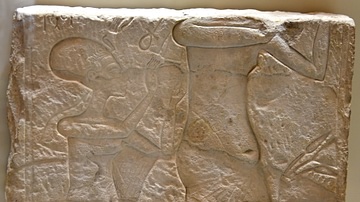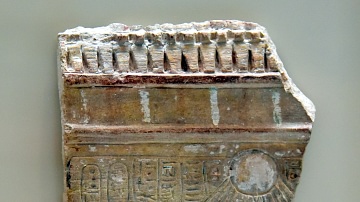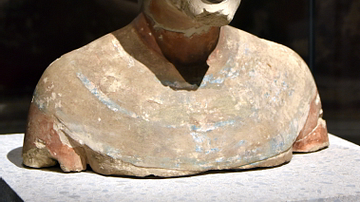Illustration
Small, painted votive statue depicting the Pharaoh Akhenaten and his Great Wife Nefertiti holding hands, a notedly unusual pose in the art of the New Kingdom, c. 1345 BCE.
The king wears the blue kheperesh crown, and the queen sports the flat-topped blue crown that has become associated with her image. In keeping with the typical Amarna Period artistic conventions, both Akhenaten and Nefertiti are depicted with slightly distorted features and proportions, and both male and female figures display a similar body type.
Louvre Museum, Paris.
About the Author
Cite This Work
APA Style
McLaughlin, E. (2017, July 27). Akhenaten & Nefertiti. World History Encyclopedia. Retrieved from https://www.worldhistory.org/image/6919/akhenaten--nefertiti/
Chicago Style
McLaughlin, Elsie. "Akhenaten & Nefertiti." World History Encyclopedia. Last modified July 27, 2017. https://www.worldhistory.org/image/6919/akhenaten--nefertiti/.
MLA Style
McLaughlin, Elsie. "Akhenaten & Nefertiti." World History Encyclopedia. World History Encyclopedia, 27 Jul 2017, https://www.worldhistory.org/image/6919/akhenaten--nefertiti/. Web. 18 Jul 2025.






